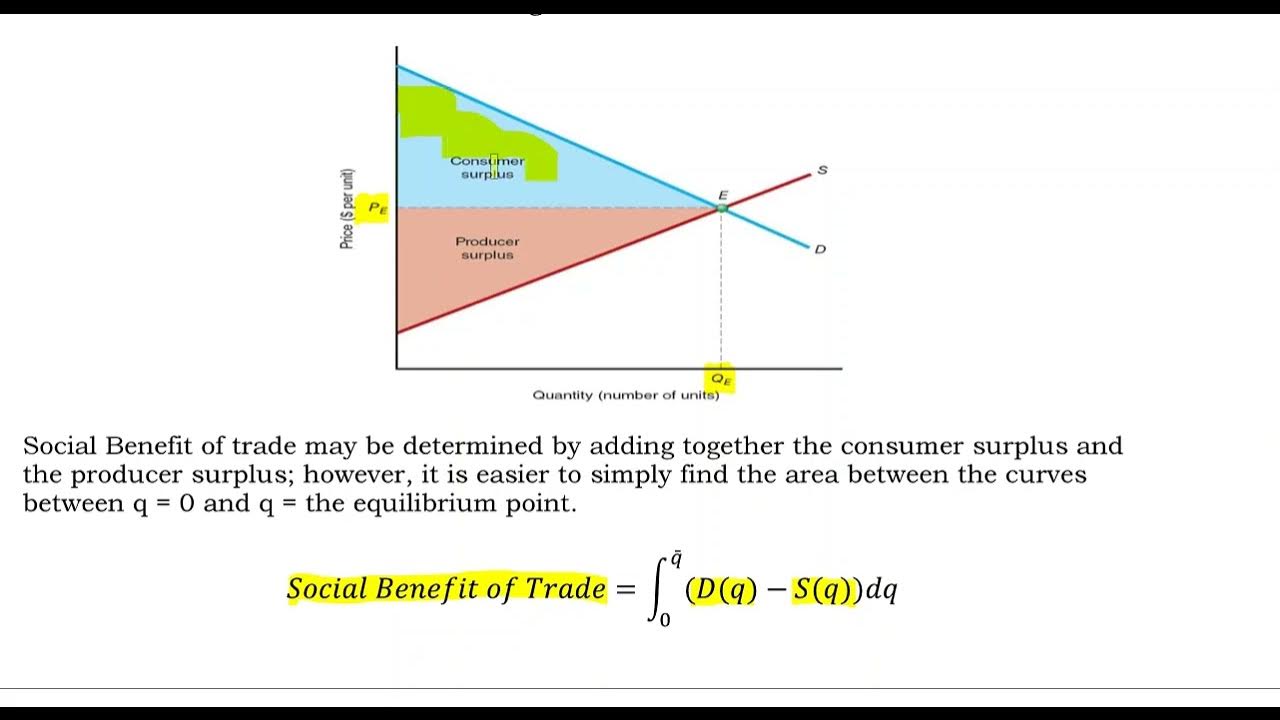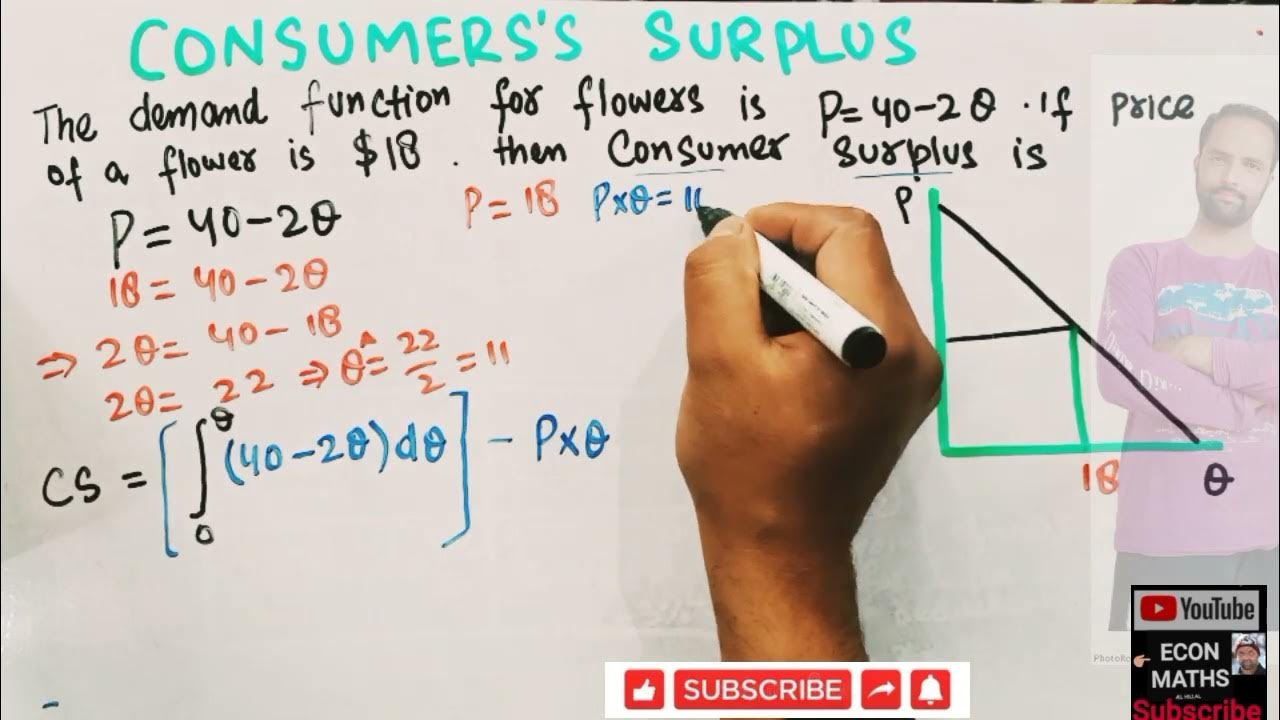Demand Curve as Marginal Benefit Curve
TLDRThis video script explores the concept of demand curves from a producer's perspective, focusing on how quantity affects price rather than the traditional price affecting quantity. It illustrates the idea by using the example of a new car model, where the producer determines the price based on the number of units they wish to sell. The script discusses the willingness to pay of consumers and the marginal benefit concept, highlighting how the price is set at the point where the additional consumer is convinced of the car's value.
Takeaways
- 🚗 The script discusses the concept of demand curves, traditionally viewed from the perspective of price determining quantity sold.
- 🔄 It introduces a different approach to understanding demand curves, focusing on how quantity produced or sold can drive the price.
- 🧐 The speaker uses the example of a new car's demand curve to illustrate the concept of quantity driving price, starting with a single car and increasing the quantity.
- 💡 The idea of 'willingness to pay' is explored, where the first person might be willing to pay $60,000 for a single car, reflecting their high value for it.
- 📈 As the quantity of cars increases, the price that can be charged decreases, reflecting the diminishing marginal benefit to each additional consumer.
- 💸 The script explains that if you want to sell two cars, you might have to price them at $50,000, which is the willingness to pay of the second consumer.
- 📊 The concept of 'marginal benefit' is introduced, which is the additional benefit that the market perceives in acquiring one more unit of a product.
- 🏷 The price can be seen as a foregone opportunity, representing what a consumer gives up to purchase the car instead of something else.
- 🤔 The script suggests that producers need to consider the marginal benefit to the market when deciding how many units to produce and at what price to sell them.
- 💭 It hints at the idea of price discrimination, where different consumers might pay different prices for the same product, which will be discussed in future videos.
- 📚 The video concludes by considering the implications of setting a price to sell a certain number of units, noting that earlier consumers may have received a better deal than later ones.
Q & A
What is the traditional way of discussing demand curves in economic conversations?
-The traditional way of discussing demand curves is in terms of price driving quantities sold, where the focus is on how the quantity demanded changes with different prices.
What is the alternative perspective on demand curves presented in the script?
-The alternative perspective is to consider quantity driving price, where the focus shifts to how the price changes as the quantity produced or sold increases.
Why might a producer consider the quantity-driven price perspective?
-A producer might consider the quantity-driven price perspective to understand how much they could charge for a product based on the quantity they are willing or able to produce.
What is the benefit of understanding both perspectives?
-Understanding both perspectives allows for a more comprehensive analysis of market dynamics, enabling producers and economists to make more informed decisions.
Outlines
🚗 Understanding Demand Curves from a Producer's Perspective
This paragraph discusses a shift in perspective on demand curves, traditionally viewed through the lens of price affecting quantity sold. The speaker invites the audience to consider the scenario from a producer's standpoint, where quantity produced influences the price. The example of a new car's demand curve is used to illustrate this concept, explaining how the price is determined by the willingness to pay of the last buyer interested in purchasing an additional unit. The script introduces the idea of marginal benefit and how it relates to the price that can be set for each incremental unit sold, emphasizing the producer's strategic decision-making in pricing to maximize sales volume.
💰 Pricing Strategy and Consumer Value Perception
The second paragraph delves into the implications of pricing strategy on consumer perception of value. It builds on the previous discussion by hypothesizing a scenario where the producer decides to sell four units per week at a price that appeals to the fourth buyer, set at $30,000. The summary highlights the concept that earlier buyers, who purchased at higher prices, may feel they received a better deal relative to their willingness to pay. This sets the stage for the next video, where the idea of consumers getting more value than the monetary cost they paid is explored, hinting at the psychological and economic dynamics at play in pricing and consumer satisfaction.
Mindmap
Keywords
💡Demand Curve
💡Price Driving Quantities
💡Quantity Driving Price
💡Producers
💡Willingness to Pay
💡Marginal Benefit
💡Opportunity Cost
💡Market Study
💡Consumer
💡Production Possibilities Frontier (PPF)
💡Price Discrimination
Highlights
Introduction to the concept of demand curves and how they traditionally relate price to quantity sold.
Shift in perspective to consider quantity driving price instead of price driving quantity.
Exploration of producer's viewpoint on determining the price for a given quantity of cars produced.
Illustration of how the first car can be sold at a higher price reflecting the highest willingness to pay.
Discussion on the decreasing willingness to pay as more units become available for sale.
Concept of setting a uniform price for all units sold and its implications on consumer willingness to pay.
Introduction of the marginal benefit and its role in determining the price for additional units.
Explanation of how the marginal benefit reflects the opportunity cost of spending money on a car.
The idea that price can be viewed as a foregone opportunity and its connection to the concept of marginal benefit.
Differentiation between the marginal benefit to the market and to the next consumer.
The impact of pricing strategy on the number of units sold and the perceived value by consumers.
The potential for consumers to get more value than what they pay for due to pricing decisions.
Teaser for the next video discussing the implications of pricing to sell a certain number of units.
The importance of understanding consumer psychology and market dynamics in pricing strategies.
Insight into how the demand curve can be viewed from a producer's perspective to maximize profit.
Discussion on the trade-off between the quantity of cars produced and the price at which they are sold.
The strategic approach to setting prices based on consumer willingness to pay and marginal benefits.
Transcripts
Browse More Related Video

What is Consumers Surplus and Producer Surplus?

What is Consumer Surplus? | Think Econ | Microeconomic Concepts

Social Benefit of Trade (Gains from Trade)

Consumer surplus introduction | Consumer and producer surplus | Microeconomics | Khan Academy

Consumer Surplus and Producer Surplus

consumers' surplus Example
5.0 / 5 (0 votes)
Thanks for rating: